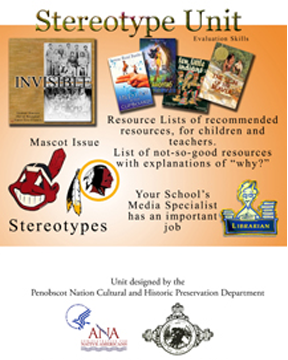 This unit, which should be taught first, deconstructs common stereotypes of Native Americans and helps students identify and understand their own preconceived notions. The unit includes five activities: readings in social consciousness, a study of Native American groups across the country, two scavenger hunts, and “identifying stereotypes,” which teaches students how to identify their own attitudes toward Native Americans and encourages them to evaluate books, movies and other resources that may contain stereotypes.
This unit, which should be taught first, deconstructs common stereotypes of Native Americans and helps students identify and understand their own preconceived notions. The unit includes five activities: readings in social consciousness, a study of Native American groups across the country, two scavenger hunts, and “identifying stereotypes,” which teaches students how to identify their own attitudes toward Native Americans and encourages them to evaluate books, movies and other resources that may contain stereotypes.
We piloted the stereotypes unit in the Old Town, Maine elementary school library with fifth grade students. As they learned about Native Americans across the United States and in Maine, they were introduced to important resource evaluation skills. The school Librarian/Media Specialist Lynn Lowell Mayer developed a resource list, available as a download.
Note: While this unit was being pilot tested in 2005, an historic event took place in Old Town, Maine: largely in response to the wishes of the Council of the Penobscot Nation, the Old Town school board voted unanimously to remove their long- standing Indian mascot. This important event reflects a shifting climate nationwide on the appropriateness of Indian mascots.
